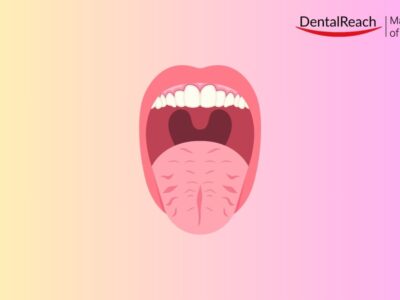Perfect health is a honor that has been the goal of human race through ages. Nutrition provides substrates that are very essential for expression of genetic tradition. It follows therefore, that nutrition might influence the occurrence and severity of degenerative diseases that are associated with aging. Nutritional problems may result from changes associated with aging process itself, from disease or other medical conditions, from interactions with medications and so on.
INTRODUCTION
Proper nutrition is crucial for the health of oral tissues as healthy tissues enhance the possibility of successful prosthodontic treatment in the elderly. In patients with partial or complete tooth loss, prosthetic therapy may be important to maintain or restore masticatory function. However, many other factors also are vital for the nutritional status of geriatric patients. Thus, many age-related medical problems and diseases have nutritional aspects and the patient’s socioeconomic status and dietary habits have a profound influence on their dietary selection. The dental team should always be aware of these budding harmful effects of dental treatment and provide their remedial dietary guidance. Problems always vary with the patient and their dental condition, so suggestions must be modified to meet the patient’s particular needs.
NUTRITIONAL OBJECTIVES
- To establish a balanced diet which is consistent with the physical, social, psychological and economic background of the patient.
- To provide temporary dietary supportive treatment, directed towards specific goals such as carries control, postoperative healing, or soft tissue conditioning.
- To interpret factors peculiar to the denture age group of patients, this may relate to or complicate nutritional therapy.
AGING FACTORS THAT AFFECT NUTRITIONAL STATUS
Physiological factors
- With a decline in lean body mass in the elderly, caloric needs decrease .
- Vitamin D deficiency is a major cause of metabolic bone disease in the elderly.
- Many nutrient deficiencies common in the elderly, including zinc and vitamin B6, seem to result in decreased or modified immune responses.
- Dehydration, caused by decline in kidney function and total body water metabolism, is a major concern in the older population.
- Overt deficiency of several vitamins is associated with neurological and/or behavioral impairment B1 (thiamin), B2, niacin, B6 [pyridoxine], B12, foliate, pantothenic acid, vitamin C and vitamin E).
Psychosocial factors
- Elders, particularly at risk, include those living alone, the physically handicapped with insufficient care, the isolated, those with chronic disease and/or restrictive diets, reduced economic status and the oldest old.
Functional factors
- Functional disabilities such as arthritis, stroke, vision, or hearing impairment.
Pharmacological factors
- Prescribed drugs are the key cause of anorexia, nausea, vomiting, xerostomia, taste loss and interference with nutrient absorption and their utilization.
ORAL FACTORS THAT AFFECT DIET AND NUTRITIONAL STATUS
1. Xerostomia
- Xerostomia affects almost one in five older adults. Xerostomia is associated with difficulties in chewing and swallowing, which can adversely affect food selection and contribute to poor nutritional status.
2. Sense of taste and smell
- Age-related changes may alter food choice and decrease diet quality in some people
- Sense of smell decreases markedly with age, much more rapidly than the sense of taste.
3. Diminished taste is the result of aging.
- Sensory changes may diminish the appeal of some foods (e.g., sensitivity to the bitterness of cruciferous vegetables), limiting their consumption and potential health benefits function.
4. Oral infectious conditions
- Periodontal disease also increases with age and may be exacerbated by nutritional deficiencies.
5. Effects of dentures on chewing ability
- As adults age, they tend to use more strokes and chew longer, to prepare food for swallowing.
- Masticatory efficacy in complete denture wearers is approximately 80% less than in people with undamaged natural dentition.
6. Effect of dentures on food choices, diet quality and general health
- The consequence of dentures on nutritional status varies among individuals
- Dentate adults tend to eat more fruits and vegetables than full-denture wearers.
- Replacing ill-fitting dentures with new ones does not necessarily result in significant improvements in dietary intake.
Nutrient needs of the elderly
The oral aspects of aging as related to nutritional deficiencies, have been reviewed in dental literature, wherein many of the degenerative changes seen in the oral cavity may be due to essential nutrients.
Protein
- As the patients become older, the amount of protein required increases.
- The RDA for proteins, for persons aged 51 and over, is 0.8-g protein/kg body weight per day.
- The best sources of proteins for the elderly diet are dairy products, poultry, meats and fish in the boiled and not dried form. Nuts, grains, legumes and vegetables contain protein, which if eaten in the proper combination, is of the same quality as animal sources of protein.
- Deficiency of proteins causes edema.
Carbohydrates
- The elderly consume a large proportion of their calories as carbohydrates.
- The recommended range of intake is 50 to 60 per cent of total calories.
- Food sources include grains and cereals, vegetables, fruits and dairy products.
Water
- Inadequate intake of fluid by the elderly will lead to rapid dehydration and associated problems such as hypotension, elevated body temperature and dryness of the mucosa, decreased urine output and mental confusion.
- Under normal conditions, fluid intake should be at least 30 ml per kg body weight per day.
Vitamin A
- The RDA for vitamin A is 800-1000 micrograms RE.
- Vitamin A in food occurs in two forms: retinal, or active Vitamin A in animal foods (liver, milk and milk products) and beta-carotene or pro-vitamin A in deep green and yellow fruits and vegetables (apricots, carrots, spinach).
- Deficiency causes Bitot’s spots (eyes), conjunctival and corneal xerosis (dryness), xerosis of skin, follicular hyperkeratosis, decreased salivary flow, dryness and keratosis of oral mucosa and decreased taste acuity.
- Long standing deficiency may cause hyperplasia of the gums, as well as generalized gingivitis.
Vitamin C
- The RDA is about 60 microgram.
- Food sources include citrus fruits, tomatoes, potatoes and leafy vegetables.
- Deficiency causes spongy, bleeding gums, petechiae, delayed healing tissues, painful joints.
Vitamin D
- The elderly are frequently deficient in Vitamin D because of lack of sun exposure and an inability to synthesize Vitamin D in skin and convert it in the kidney. Vitamin D is found in fish liver oils.
- The RDA is 5 microgram.
- Deficiency causes bowlegs, beading of ribs.
Vitamin E
- Vitamin E deficiency in the elderly does not seem to be a problem. Total plasma vitamin E levels increase with age.
- The RDA is 8-10 mg alpha-TE.
Minerals
- A study conducted by J. Crystal Braxter illustrated deficiencies in magnesium, fluoride, folic acid, zinc and calcium, in the geriatric population.
Folic acid
- Economically deprived urban and institutionalized elderly are at the most risk of foliate deficiency.
- RDA is 500 microgram.
- Good food sources of folic acid include leafy green vegetables, oranges, liver, legumes and yeast.
- Deficiency causes megaloblastic anemia, mouth ulcers, glossodynia, glossitis, stomatitis.
Calcium
- The RDA of calcium is 800 mg/day.
- Lactase deficiency resulting in lactose intolerance is also common in elderly persons. Food sources of calcium include milk and milk products, dried beans and peas, canned Salmon, leafy green vegetables and tofu.
- Elderly patients with complete dentures often experience a rapid and excessive ridge resorption, which may be related to negative balance of calcium, which contributes to development of osteoporosis.
Iron
- A recent review concluded that the prevalence of iron deficiency, is relatively rare among the healthy elderly. When anemia is found in an older person, blood loss should be suspected.
- The RDA for iron is 10 mg. Good food sources include meat, fish, poultry, whole grains, fortified breads and cereals, leafy green vegetables, dried beans and peas.
- Deficiency causes burning tongue, dry mouth, anemia’s and angular cheilosis.
Zinc
- Zinc utilization declines with advancing age, because intestinal absorption decreases after the age of 65 years.
- The RDA is 15 mg.
- Good sources of zinc are animal products, whole grains and dried beans.
- Deficiency causes decreased taste acuity, mental lethargy and slow wound healing.
FOODS RECOMMENDED FOR THE ELDERLY
All the nutrients necessary for optimal health in the desirable amounts, can be obtained by eating a variety of foods in adequate amounts from the following five food groups:
- Four servings of vegetables and fruits, subdivided into 3 categories:
- 2 servings of rich sources of vitamin C, such as citrus fruits, salad greens and raw cabbage.
- 1 serving of a rich sources of provitamin A such as deep green and yellow vegetables or fruits.
- 1 serving of potatoes and other vegetables and fruits.
2. Four servings of enriched breads, cereals and flour products.
3. Two servings of milk and cheese are necessary.
4. Two servings of meats, fish, poultry, eggs, dried beans, peas, nuts.
5. Additional foods may be given which include fats, oils and sugars; the only serving recommendation is for about 2-4 tablespoons of polyunsaturated fats, which will supply essential fatty acids.
DIET RECOMMENDED FOR NEW DENTURE WEARER
The logical sequence of eating food is biting, chewing and swallowing and it is much easier for the new denture wearer to master this complex of masticatory movements in the reverse order. Consequently, food of a consistency that will require only swallowing, such as liquids, should be prescribed for the first few days after insertion of the denture. The use of soft foods is prescribed for the following few days and a regular diet can be eaten by the end of the week.
First post-insertion day
Vegetable-Fruit group: Juices
Bread-Cereal group: Gruels cooked in water.
Milk group: Fluid milk may be given.
Meat group: Eggs in eggnogs, pureed meats, meat broths, or soups.
The sample menu must be containing a glass of milk at least once during daytime.
Second and third post insertion day
Vegetable-Fruit group: Juices; Tender cooked fruits and vegetables, (seedless and skinless) Bread-cereal group: Cooked cereals, softened breads boiled, rice, noodles and macaroni.
Milk group: Fluid milk and cottage cheese.
Meat group: Chopped beef, ground liver, tender chicken/fish in a cream sauce, scrambled eggs, thick soups, etc.
The sample menu should be including butter or margarine, a glass of milk at least once a day.
Fourth day and after
By the fourth day or as soon as the sore spots have healed, firmer foods can be eaten in addition to the soft foods. The sample menu should be containing butter or margarine and a glass of milk.
Nutrition counseling and dietary guidance for the elderly –
- Since denture construction requires a series of appointments, dietary analysis and counseling can be easily incorporated into the treatment sequence.
- The patient should be urged to see his physician for more detailed diagnostic procedures and treatment, when severe deficiency disease of any kind is present. On the other hand, advice can be given properly by the dentist, when there is obvious excessive use of cariogenic foods, evidence of imbalanced diets likely to lead to difficulty, or minimal suggestive clinical signs coupled with compatibly poor dietary habits.
CONCLUSION
Many denture failures are the result of nutritional deficiencies. Good health and nutrition of geriatric individuals are necessary for the successful wearing of dentures.
REFERENCES
- Krall E Hayes, Gilbert GH, Duncan P. How dentition status and masticatory function affect nutrition intake. J Am Dent Assoc 1998;129:1261-9.
- Barone JV. Nutrition-Phase one of the edentulous patient. J Prosthet Dent 1978;40:122-6.
- Kreher JM, Graser GN, Handelman SL. The relationship of drug use to denture function and salivary flow rate in geriatric population. J Prosthet Dent 1987;57:631-7.




















Comments